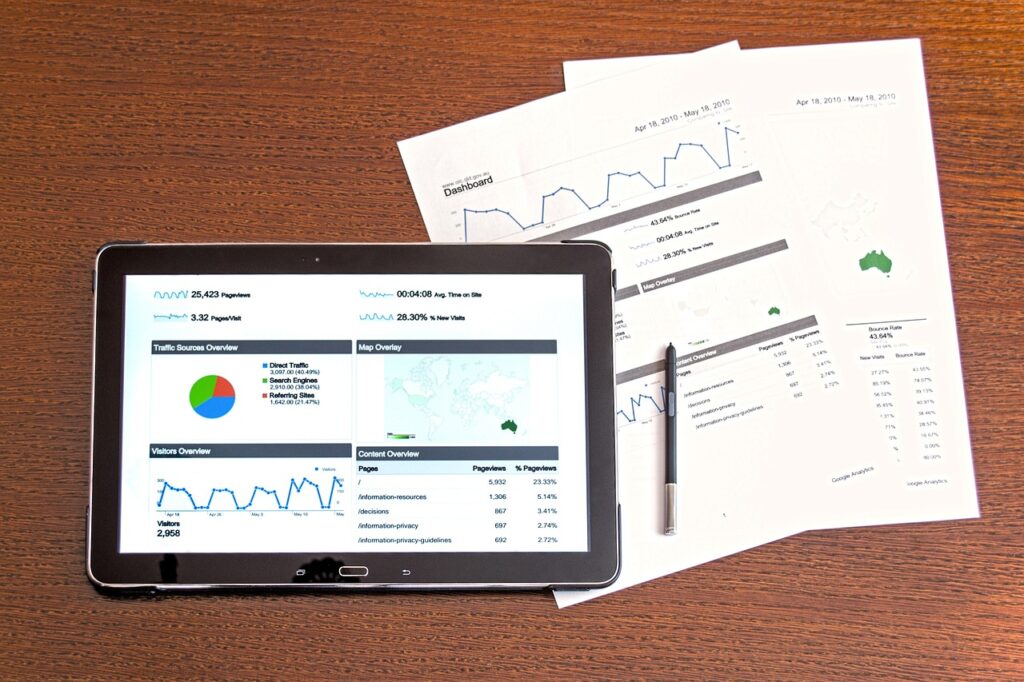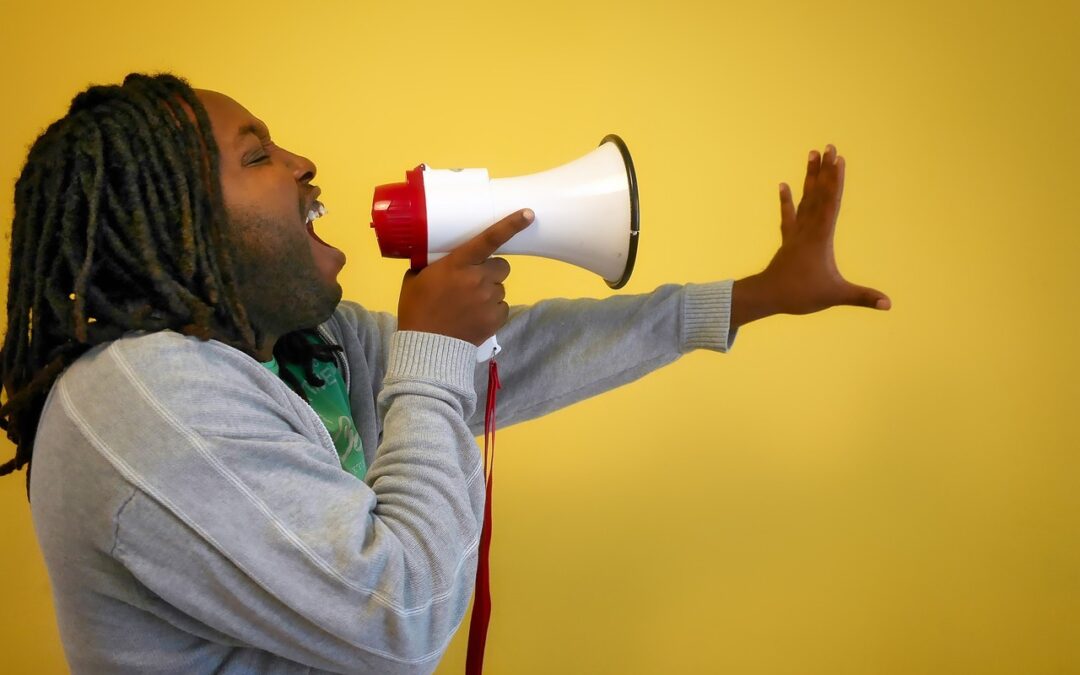How is communication used in advocacy? Communication is used in advocacy to target specific audiences using specialized messages to influence policy or change existing practices.
“One method sells coffee. The other puts people to sleep.” – Bill Shore, on what is and isn’t communication.
Generally, a successful advocacy plan has three features –
- Distinct, measurable goals
- Expert knowledge about the audience the campaign is trying to reach
- Compelling advocacy communication that connects with that audience.
While your advocacy campaign should reach out to ‘the public’ as a general practice, aiming your communication at the small group of people who can make the changes you hope for is where true success lies.
The trick is to find out who those ten, 100, or 10,000 people are and speak to them directly. After that, you can create a broader messaging campaign to speak to the general public, who will help you apply pressure on that smaller group.
Let’s have a look at how communication is used in advocacy and the best channels to do so.
How to influence decision-makers

1. Among the people: Advocacy among constituents
The most important method of influencing a decision-maker is directly appealing to voters in the constituency from which the decision-maker is based. There are time-tested methods of doing this, and they have great success. Appealing to constituents is the foundation of almost all movements, from grassroots to global.
This is the core of the services offered by CallHub. Through our tools, you can launch and run a campaign in minutes
The three main ways you can convince constituents to apply pressure are:
- Reach out to the decision-maker: Have your volunteers/agents/advocates speak to every constituent and patch through those who agree to the decision-maker’s contact number. Who can ignore thousands of phone calls?
- Attend a rally: Your campaign can use the power of technology to organize rallies for your cause. Reach out to voters through phone calls, peer-to-peer texting, or simply by broadcasting a text, image, or voice note to all your contacts. Collect sign-ups, send follow-up messages with details, etc. If you can convince a crowd to chant on the streets, your cause can no longer be ignored.
- Voting: Use phone banking to take surveys, use peer-to-peer texting to have in-depth conversations, and use your database to push voters to ‘get out and vote’ on the big day. With technology, you can swing elections toward your favored candidate.
2. Getting the message out: Using the media

Advocacy campaigns should strategically use mass media (including social media) to bring a spotlight on policy issues. The media is a powerful advocacy tool to build pressure on decision-makers.
The media can change minds at every stage of the process, from the initial proposal to drafting the new policy to the implementation. Critically, the media should be used to humanize complex issues by showcasing real people.
Those in elected positions must consider the effect press coverage has on voters’ minds. Those in appointed jobs are often removed if there is a significant outcry. So the media matters.
Your campaign will need an effective media outreach plan, though. This includes:
- Identifying the media channels and outlets that cover your policy issue and are consumed by your decision-makers and advocates.
- Developing a contact list of those channels and outlets’ journalists, editors, gate-keepers, etc. This ranges from phone numbers to emails to social media handles.
- Define your current goals numerically. For example, “We need to reach out to 15 journalists to have five items circulating in the media by June 1.”
- Creating relevant factsheets, documentation, and pitches for the media.
- Finding human angles to your stories – especially those who are, or will be, affected by the policy. Prep them for interviews, and maintain a database of contacts.
- Assigning specific team members as a point-of-contact for journalists who reach out.
3. Information is power: Influencing policy through data

When a campaign asks for specific policy changes, they must ensure they are well equipped for the two-front information war – data and red tape.
Decision-makers are usually cocooned within dense bureaucratic layers, at the center of an army of civil servants and a mountain of red tape. As such, they may both be unaware of the issue, unaware of the impact, or unable to make things happen unless certain documents are submitted or information shared.
To move matters towards the outcome, your campaign must do its best to gather the best quality information it can (via studies, ground reports, etc.) and have a firm understanding of the permissions, committee reports, or even government departments that will have to be involved in making this happen.
Don’t let your conversation die at “But have you filed an impact study under Form 16(a)?” if you really want to apply how communication is used in advocacy.
4. Personal Relationships build bonds: Direct lobbying for your cause

Lobbying in the United States is how most advocacies and pressure groups ensure their interests are kept at the forefront of decision-makers’ minds. Successful advocacy maintains strong relationships with local, state, and federal elected leaders. Your lobbying should include:
- Having a proper understanding of all the concerned officials, their office terms, upcoming elections, and the voters/agency that appoints them.
- Being present at events, seminars, town hall meetings, or rallies attended by these decision-makers and their voters.
- Ensure a follow-up message is sent after every meeting (remember to take their contact details whenever you meet).
- Being known as an expert in the policy whose change you advocate is backed by research and data you can produce when asked.
- Have regular conversations with the decision-making staff about the issue that concerns you.
Communication should empower all these efforts, from maintaining public databases of decision-makers to ensuring all reports are updated every quarter with the facts. Your communications should also clarify who you are speaking to and when.
Speaking to a stranger once to convince them to change a policy they may have little idea about is not a winning strategy. Instead, meet and greet decision-makers and their staff until you are no longer strangers.
This form of advocacy, called direct lobbying, is quite impactful in the United States. You can read all about it in our guide: Direct Lobbying: Everything You Must Know To Do It The Right Way.
How to influence constituents and gain advocates

“It is important to get residents involved with what is already happening. Sometimes, we think because we are involved in this discussion, everybody else should know. This is not the case.”
– J. Walter Tejada
The most frequently given answer to the question “Why didn’t you participate in some collective action?” is “Because nobody asked me.”
One of the most effective mobilization techniques is asking somebody to join a protest event.
How you ask and how frequently, whether directly or through intermediate advocates like peer groups, friends, family, etc., are all part of your communication to constituents. How well you communicate will directly reflect how many of those constituents turn into advocates for you.
Build a community: Social incentives
Imagine if your campaign was something regular patrons bragged about in the pub, regaling newcomers (possibly for the 100th time) with tales of heroism, desperation, and last-minute wins. Behind the scenes, the regulars work hard to win so they don’t look bad in front of the other pubgoers. Newcomers want to be like the regulars because it will help them fit in and join the campaign. Because most regulars and many newcomers are all talking about this campaign, everyone else pays attention and helps when they can.
This is a ‘social incentive’ in a nutshell. It is building a critical mass of support in the community for your cause so that being a part of it is not only from peer pressure but also holds social value.
Communication is key to this. Phone and text-based communication will help you plant the seed of a community, and relational organizing can take your campaign from ‘weekend activity’ to ‘social cause.’
For direct communications, make sure you –
- Call or text potential advocates and plan meetings, rallies, or a cookout/BBQ.
- Send timely reminders to all those interested in such meetings, rallies, etc.
- Send out follow-up emails and texts highlighting the main issues discussed and how the community was growing.
- Provide regular updates about the campaign and critically collect feedback from your advocates.
- Convince regular attendees to expand this campaign into their own social circles.
For relational organizing, make sure you –
- Encourage your strongest advocates every week to start sharing communications you created with their immediate friends and family.
- Encourage your strongest advocates every week to share your communications and updates on their social media.
- Provide them with a kit, script, or data to share directly with friends and family. This will make it easier for them to explain common queries or direct interest toward attending your next meeting.
CallHub offers tools to help you make this happen – our Relational Organizing helps all advocates reach their immediate friends and family.
Lower all barriers to change: How to influence policy

Image by:
Gundula Vogel from PixabayOne of the biggest obstacles to motivating people is the deep-seated belief that one vote, one call, one email, or one more person in a rally will not make a difference.
Such a belief includes thoughts like:
- How do I know my vote makes a difference?
- I don’t have much time, so I can’t make a difference.
- I don’t know if any goals have been reached or where the process is stuck.
- I can’t leave my office/home and come work for the campaign, so I am not right for this cause.
All of these beliefs can be considered as ‘barriers’ to advocacy, and a critical aspect of communication is spreading awareness about how overcoming these barriers is relatively easy if the campaign is well organized.
Remember, the goal of your communication is to ‘babysit’ each person’s effort – and show them where it has gone at every step of the way.
Your communication must:
- Showcase clear goals, with numbers and timelines – at the very start.
- Make it clear how you will route each vote, signature, or email to the appropriate decision-maker.
- Provide regular updates on each step.
- Give them easy-to-follow steps that take up very little time.
- Ensure timely follow-ups with relevant information and reminders.
‘Patch-through calls’ is a classic example of this. How many people would call their Senator when an issue resonates with them? Most wouldn’t know what to say, what time to call, or what the number is.
But you can convince them simply by calling them at the right time, explaining a short template about what to say, and asking them to be immediately forwarded to the right number. In five minutes, they either spoke to a staffer or left a voice message.
By lowering all the barriers, your campaign can direct thousands of calls a day to a Senator and hopefully get a policy changed.
Volunteer appreciation: Building the personal advantage
Most people are motivated by the personal advantage they can gain, but they are equally reluctant to put in all the effort needed to gain an advantage, believing that their one single vote makes no difference.
Your campaign needs the complete opposite kind of person—someone who is not only working for causes that don’t directly benefit them but is also willing to put in the groundwork needed to make a change while believing that efforts can make a difference.
Such people are known as ‘conscience constituents’ in academia. But there is a problem – you cannot actually herd such people into your campaign. They will join, usually in small numbers, on their own accord.
You must use your communication to spread their example far and wide while showcasing how following their example, even partly, can maximize everyone’s personal advantage while minimizing the work that has to be done.
Communications must:
- Highlight how ‘conscience constituents’ are willing to do the groundwork for a campaign (make the calls, do the survey, knock on doors, etc.), so people must support them by participating.
- Give them shoutouts and praise in newsletters or on social media to encourage social motivation to achieve stretch goals.
- Create human interest stories from their life stories, giving your campaign a strong human face and a ‘hero’ for the community to rally around.
- Have them answer doubts or questions, smoothing the participation process for the rest.
Ultimately the goal is to showcase how much personal advantage everyone gains and how little effort is needed to keep the momentum going. A smart communication cycle gives the community a leader and gives the people an example to follow.
If you want more information on how to share your appreciation for the good work your team is doing, have a look at this guide.
Ultimately, communication is your face to the world, the affected community, and the decision-makers who ultimately will change the policy. While you may wear different masks for different people, having a clear message and honest conviction will work the best. Show the world your real face, and your conviction will speak for itself.
Quick list: Best practices for communicating as an advocacy

Image by:
Dean Moriarty from Pixabay- Automate. Automate. Automate: Everything from auto-dialers to follow-up emails and text messages, reminders, database updates with tags, thank you emails, and nudge flows—ensure no time is wasted when something can be scheduled and performed automatically.
- Have a clear plan – and stick to it: List the change you want to make, list the steps you will take to bring that change, and list the steps advocates have to take. And don’t change the goalposts or the messaging unless you have to.
- Keep communications regular and short: No one wants to read a novel, and neither do people want to feel you remember them only when you want funds. Ensure all updates are regular, and keep them short.
- The human comes first: Make sure the affected people and human emotions are always front and center of all your communication. People must understand how your work directly impacts real lives. Use storytelling to your advantage rather than bland numbers alone.
We hope you’ve learned how communication is used in advocacy. Wish you the best for your future advocacy communication campaigns.
If you would like to learn more about advocacy best practices, you can read our article: Empower Your Cause: The Ultimate Advocacy Toolkit Guide


